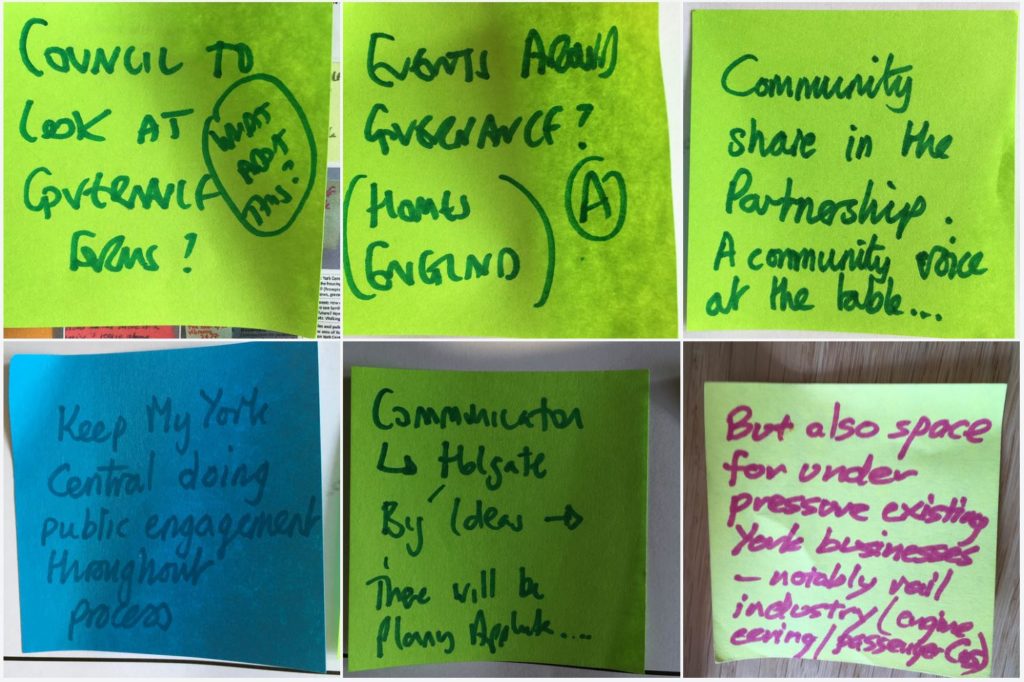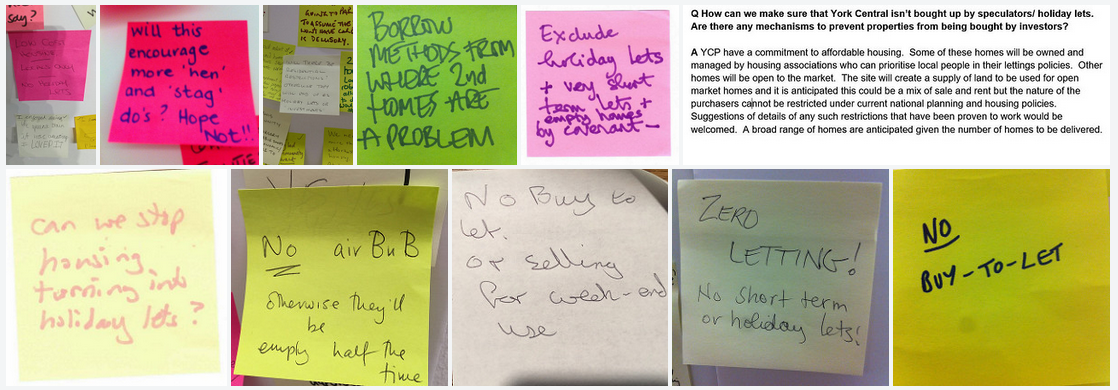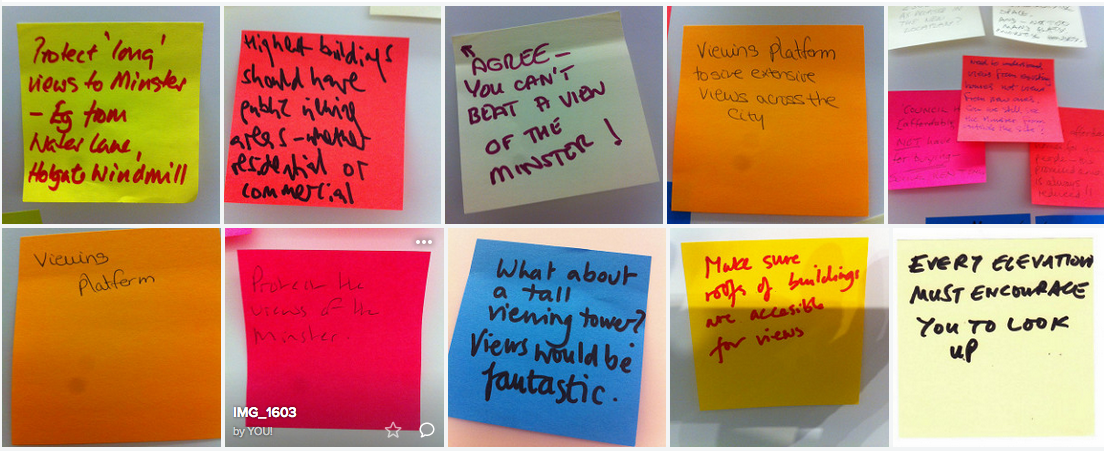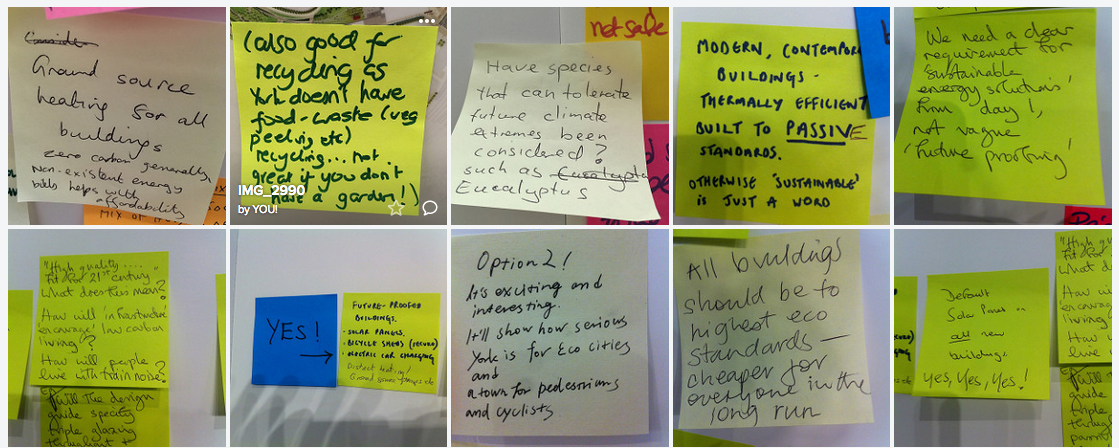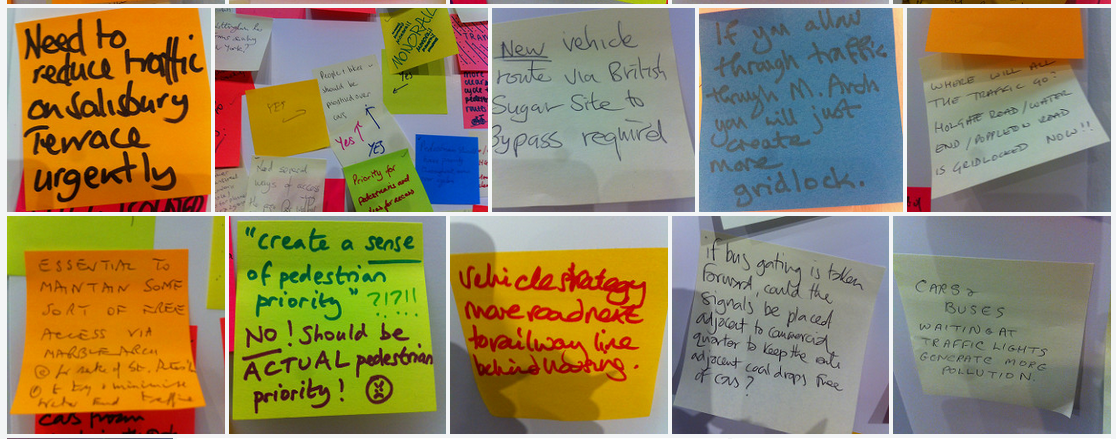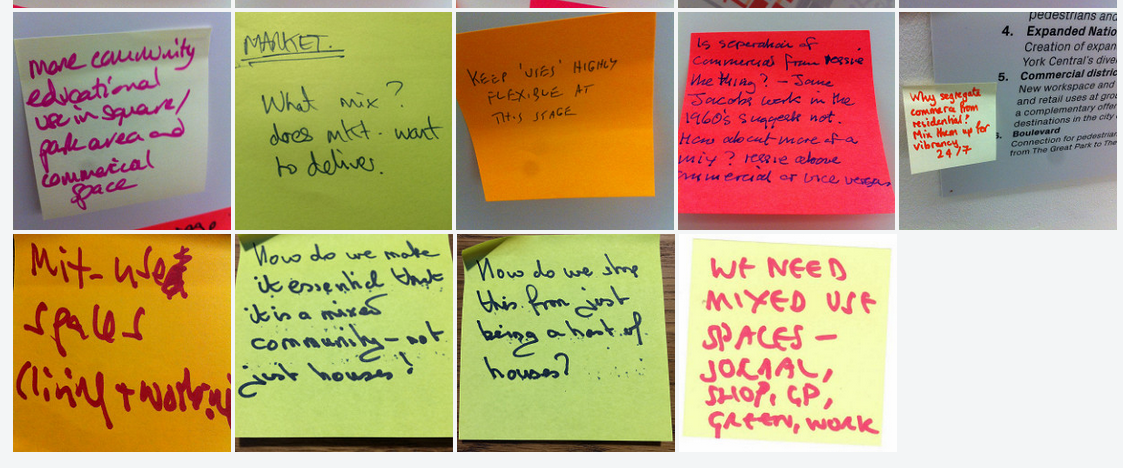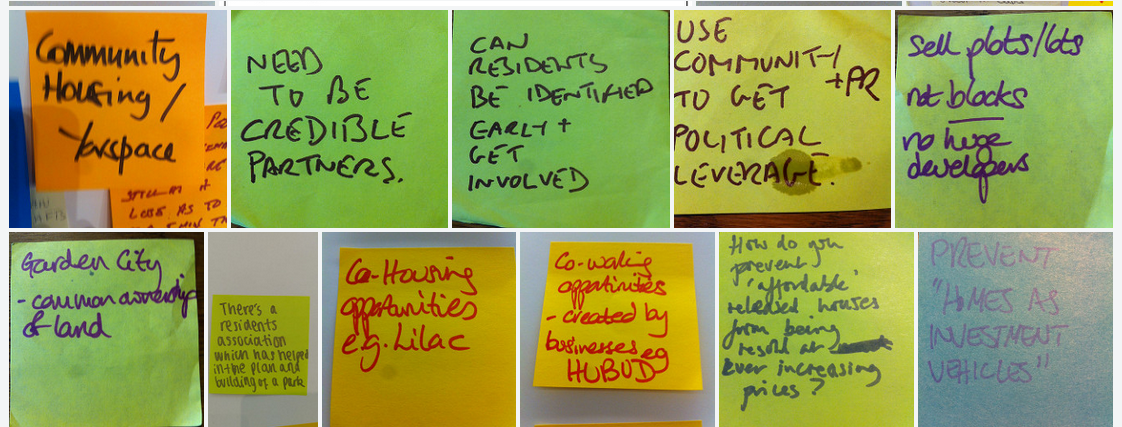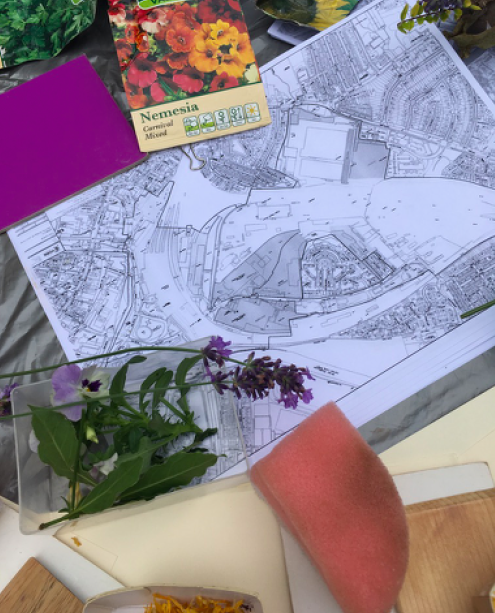
On 5th July My York Central held a drop-in afternoon / evening workshop to develop a brief for a Hub or Exchange on York central. The event was to develop further two of the My York Central Big Ideas:
6) A community made through exchange: York has enormous wealth, socially, culturally and financially. Use York Central to build a community that can build links between people to address inequalities through sharing and exchange.
7) A hub that catalyses York’s creativity and innovation: Amazing things are happening in York from media, science and technology and heritage. Develop a showcase and learning hub that challenges perceptions and fuels new ideas and networks.
There was some discussion over whether physical facilities should be one building (with opportunities for cross-fertilisation between activities) or a network of smaller buildings within a dense, walkable neighbourhood. Or indeed both with boundaries between the distributed and the centralised approaches being noted as topic for further discussion.
Below are some key ideas to form the beginnings of an open brief for an Exchange on York Central. Download a PDF.
Spaces – for activities and connection
Many people contributed ideas for specific spaces that would enable particular kinds of activity. How can a space be designed for multiple uses and different activities, and what is the right mix of dedicated and multi-use space?
Also, is there a way we can establish meanwhile use on York Central to start to explore these multiple activities? Can we learn from the experience of Spark and similar projects, and avoid having to necessarily get it exactly right first time (which would be a big ask with such a new idea)?
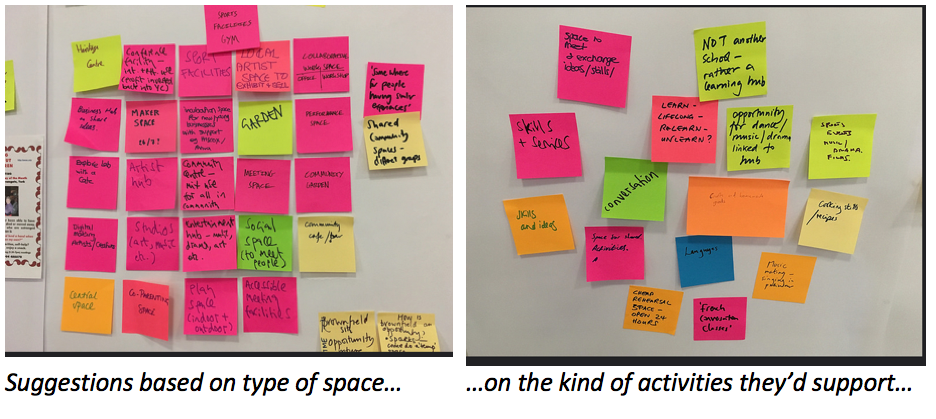
Governance: How to use the power of the city’s big players but in a way that is also community-engaged?
Questions were raised about how such a space should be run and who by, whether it is via community-led governance or by one or more of the city’s big players. More work needs to be done on this but – like the My York Central Big Ideas – there was a sense that money made should be reinvested in the community. This could mean the Exchange renting out co-working and meetings space or community-owned retail. There was a feeling among some that there was a big demand from specific sectors (creative/software industries for example) for clustered space which suited their needs and that this could be an income-generator.
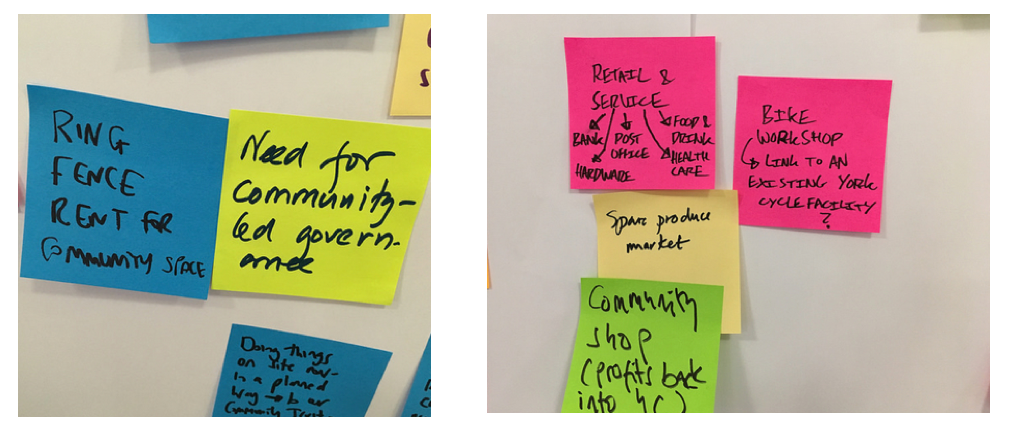
Importance of places that make social connections
The point of living in a city is lots and lots of potential connections – but making these connections can be hard. How can we design a place where you want to spend time, you know something interesting is always going on and that facilitates the connections that otherwise are only serendipitous? How can we create opportunity for meeting and connecting? How can we use mix of use, ease of movement (on foot and bike) and communication of all sorts (via the net, via social and cultural interaction and by physical signposting) to create an urban climate where this process of exchange is actively enabled?
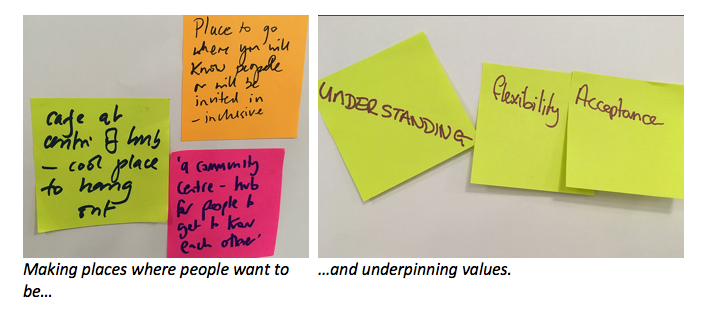
The power of the intergenerational
There was a clear wish to positively address the nature of an intergenerational society, one where people of all ages had something to contribute and where participation in the process of exchange – of skills, time, money etc – wasn’t restricted by simple boundaries of education, work and retirement. Mirroring suggestions for the broader development on York Central, there were suggestions that the Exchange should not just work for all, but should encourage intergenerational links and value them.
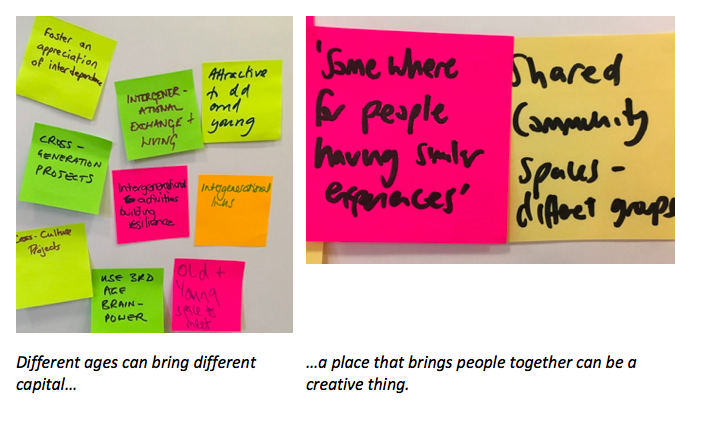
Digital… + engineering + heritage + the environment
The Exchange should be interdisciplinary and refuse old binaries of art or science; past or future; digital or analogue and make the post of York’s strengths in media, science, railway engineering and heritage. It should encourage the crossing of boundaries – both for economic benefit and for the simple joy of city life bringing surprises.
There is a challenge in moving beyond simplistic responses in heritage and the environment – brick-arched “railway-ish” buildings and simple peppering with solar panels – and there was a view that making connections between issues was the key to unlocking a richer and more successful form of development, of which this building could be at the heart.
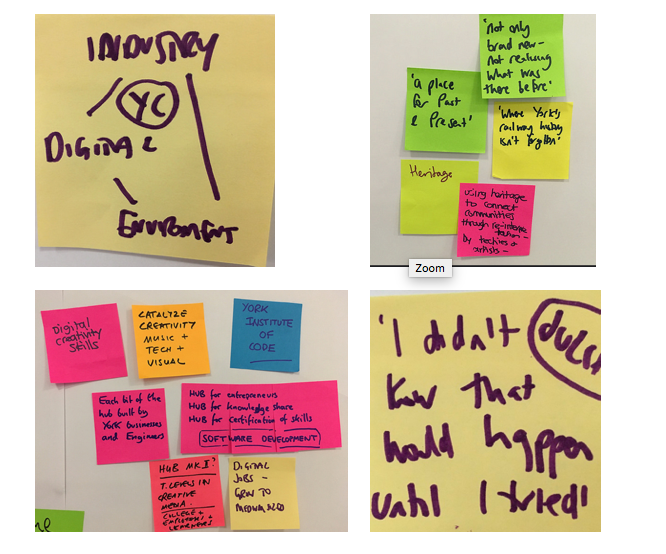
Connect in with – and build on – what is already going on
The Council, CVS and York Timebank already are facilitating a lot of people to connect up with other people and activities – how can all this activity be better signposted to each other and ensure that any new Exchange builds on and compliments this activity rather than reinvents the wheel. It also raised the question of whether ‘volunteering’ and ‘service’ are the same as reciprocal exchange?
We need a further discussion about these different ideas and what they might mean for the York Central Exchange. In pragmatic terms this means more events where professionals working on these schemes and individuals interested in such networks can work together to co-design what it is.
